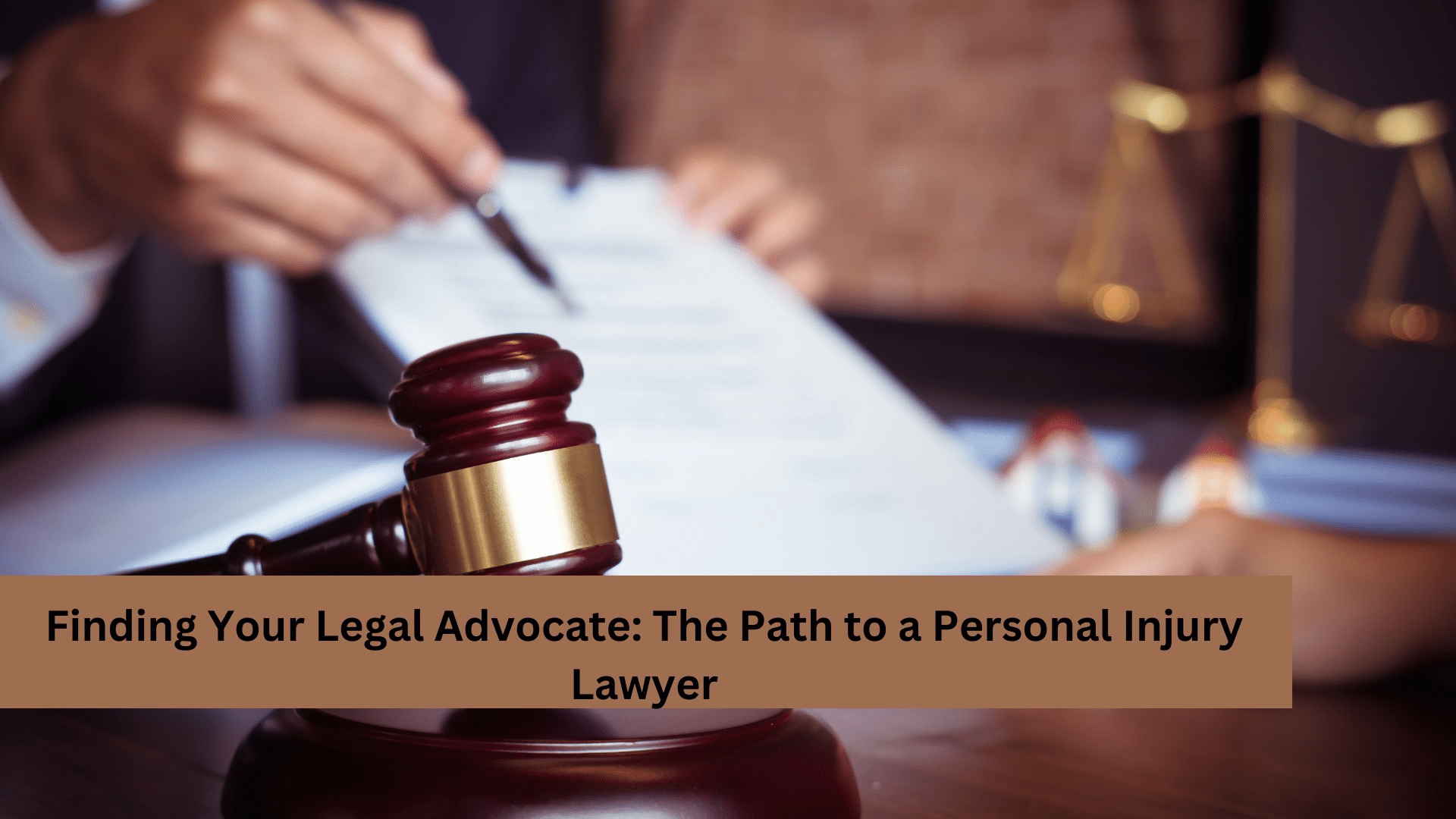I. Introduction
A. Significance of Comparing Personal Injury Law in Australia and Canada
Personal injury law plays a crucial role in protecting the rights and interests of individuals who have suffered harm due to the negligence or wrongdoing of others. As legal systems differ across countries, it is important to examine and compare the laws and practices related to personal injury cases in various jurisdictions. This article focuses on conducting a comparative analysis of personal injury law in Australia and Canada, two countries with well-established legal systems and significant similarities in their legal frameworks.
The comparison between Australia and Canada holds great significance due to their shared legal heritage as common law jurisdictions. By exploring the similarities and differences in how personal injury claims are handled in these two countries, we can gain valuable insights into the legal landscape and identify potential areas for harmonization or improvement.
B. Overview of the Article’s Focus on Insights from Legal Landscapes
In this article, we delve into the intricacies of personal injury law in Australia and Canada, providing a comprehensive comparative analysis. By examining key aspects such as the legal framework, liability principles, compensation systems, and procedural aspects, we aim to shed light on the similarities, differences, and noteworthy practices in these two jurisdictions.
Through this analysis, we hope to contribute to a better understanding of the legal landscapes of Australia and Canada, facilitating knowledge exchange, and promoting the development of best practices in personal injury law.
C. Introduction to Andrew Bergel as an Expert Source of Information
To ensure the accuracy and reliability of the information presented in this article, we have consulted Andrew Bergel, a recognized expert in personal injury law. With years of experience and in-depth knowledge of both the Australian and Canadian legal systems, Bergel provides valuable insights and analysis that enhance the depth and quality of our comparative study.
Throughout this article, we will reference Bergel’s expert opinions and observations, further reinforcing the credibility and validity of our analysis.
Stay tuned as we delve into the fascinating world of personal injury law, examining the similarities and differences between Australia and Canada, and uncovering the nuances that shape these jurisdictions’ legal frameworks.
II. Understanding Personal Injury Law in Australia
A. Overview of the Australian Legal System and Its Structure
Australia follows a constitutional framework that establishes a federal system of government. The power is divided between the Commonwealth (federal) government and the individual state and territory governments. Understanding the structure of the legal system is crucial for comprehending personal injury law in Australia.
- Constitutional Framework and Division of Powers
The Australian Constitution delineates the division of powers between the federal and state governments. The federal government has jurisdiction over specific matters, such as immigration, defense, and trade, while the states have jurisdiction over areas such as healthcare, education, and transportation. This division impacts the legislative authority and the application of personal injury law.
- Role of Federal and State Laws in Personal Injury Cases
In personal injury cases, the legal framework primarily operates at the state and territory level. Each jurisdiction has its own legislation and regulations governing personal injury claims. However, the federal government plays a role in certain areas, such as workers’ compensation for federal employees and maritime injuries.
B. Personal Injury Laws in Australia
- Common Law Principles and Statutory Provisions
Australia’s personal injury law is a blend of common law principles and statutory provisions. Common law refers to legal principles established through court decisions, while statutes are laws enacted by legislatures. Personal injury cases often rely on both common law and specific legislation.
- Compensation and Liability in Negligence Claims
In negligence claims, a fundamental aspect of personal injury law, the injured party must establish that the defendant owed them a duty of care, breached that duty, and caused them harm. If these elements are proven, the injured party may be entitled to compensation for damages such as medical expenses, loss of income, and pain and suffering.
C. Key Considerations in Australian Personal Injury Cases
- Limitation Periods and Procedural Requirements
Limitation periods set the time within which a personal injury claim must be filed. In Australia, these periods vary depending on the nature of the injury and the jurisdiction. It is crucial for claimants to be aware of these limitations to ensure their rights are protected. Additionally, procedural requirements such as pre-action protocols and mandatory dispute resolution processes may apply, which aim to streamline the resolution of personal injury disputes.
- Role of Insurance and Statutory Accident Compensation Schemes
Insurance plays a significant role in Australian personal injury cases. Both individuals and businesses typically have insurance coverage to mitigate the financial risks associated with potential liability. Furthermore, some jurisdictions have statutory accident compensation schemes that provide benefits and compensation for specific types of injuries, such as workplace accidents or motor vehicle collisions.
Understanding these key considerations in Australian personal injury cases is essential for navigating the legal landscape and advocating for the rights of injured individuals.
III. Understanding Personal Injury Law in Canada
A. Overview of the Canadian Legal System and Its Structure
To gain a comprehensive understanding of personal injury law in Canada, it is crucial to grasp the structure and functioning of the Canadian legal system.
- Constitutional Framework and Division of Powers
Canada operates under a constitutional framework that establishes a federal system of government. The Constitution Act, 1867, divides powers between the federal government and the provincial governments. The federal government has jurisdiction over matters such as criminal law, immigration, and trade, while the provinces have authority over areas such as healthcare, education, and transportation. This division of powers impacts the legislative framework and the application of personal injury law across the country.
- Role of Federal and Provincial Laws in Personal Injury Cases
Personal injury law in Canada is primarily governed by provincial laws, although federal legislation may apply in specific situations, such as accidents involving federal employees or transportation across provincial borders. Each province and territory has its own legislation and regulations concerning personal injury claims, which can lead to variations in legal principles and procedures.
B. Personal Injury Laws in Canada
- Common Law Principles and Statutory Provisions
In Canada, personal injury law is based on a combination of common law principles and statutory provisions. Common law refers to legal principles established through court decisions, while statutes are laws enacted by federal or provincial legislatures. Personal injury claims often involve both common law concepts, such as negligence, and specific legislation governing particular types of accidents, such as motor vehicle collisions or workplace injuries.
- Assessment of Damages and Liability in Negligence Claims
In negligence claims, which form a significant portion of personal injury cases, the injured party must demonstrate that the defendant owed them a duty of care, breached that duty, and caused them harm. If these elements are proven, the injured party may be entitled to compensation for various types of damages, including medical expenses, loss of income, and pain and suffering. The assessment of damages and liability varies based on the specific circumstances of each case and the applicable provincial laws.
C. Key Considerations in Canadian Personal Injury Cases
- Limitation Periods and Procedural Rules
Limitation periods in Canada set the time within which a personal injury claim must be filed. These periods differ across provinces and territories, ranging from two to six years. It is crucial for claimants to be aware of these limitations to ensure their claims are not time-barred. Additionally, procedural rules, such as mandatory mediation or settlement conferences, may apply to facilitate the resolution of personal injury disputes.
- Role of Insurance Coverage and Accident Benefits
Insurance coverage plays a significant role in Canadian personal injury cases. Individuals and businesses typically carry insurance policies that provide coverage for potential liability arising from personal injury claims. Additionally, most provinces have accident benefits or no-fault insurance systems, which provide certain benefits to injured parties regardless of fault, such as medical expenses, rehabilitation costs, and income replacement.
Understanding these key considerations in Canadian personal injury cases is essential for navigating the legal landscape, advocating for the rights of injured individuals, and promoting fair and just outcomes.
IV. Comparative Analysis of Personal Injury Laws in Australia and Canada
A. Legal Similarities and Differences in Personal Injury Cases
To gain a comprehensive understanding of personal injury law in Australia and Canada, it is important to examine both the similarities and differences that exist in these jurisdictions.
- Examination of Legal Principles and Standards of Care
Both Australia and Canada rely on common law principles in personal injury cases, particularly those related to negligence. The duty of care, breach of duty, and causation are key elements considered in establishing liability for personal injury. However, there may be variations in the interpretation and application of these principles between the two jurisdictions, as influenced by local court decisions and legislation.
- Comparative Analysis of Compensation and Liability Rules
In terms of compensation and liability rules, Australia and Canada exhibit similarities and differences. Both jurisdictions allow for the recovery of various types of damages, including medical expenses, lost income, and pain and suffering. However, the specific rules governing the assessment and quantification of damages may vary. Additionally, the allocation of liability and the extent of fault required for a successful claim may differ between the two countries.
B. Role of Negligence and Contributory Negligence in Both Jurisdictions
Negligence and contributory negligence play crucial roles in personal injury cases in both Australia and Canada. Comparing the treatment of negligence and contributory negligence in these jurisdictions sheds light on their legal landscapes.
- Comparative Assessment of Fault Allocation and Its Impact on Claims
In both Australia and Canada, the principle of contributory negligence recognizes that the injured party may have contributed to their own harm. However, the way in which contributory negligence affects a claim can differ. Some jurisdictions employ a pure comparative negligence approach, where damages are reduced in proportion to the claimant’s contribution to the harm. Others may apply a modified or partial comparative negligence approach, which limits or bars recovery if the claimant’s fault exceeds a certain threshold. Understanding these variations is crucial when assessing the impact of fault allocation on personal injury claims.
- Differences in the Legal Tests for Negligence
While negligence is a common element in personal injury law, the specific legal tests for establishing negligence may vary between Australia and Canada. The criteria for determining whether a defendant breached their duty of care or the standard of care expected in a given situation may differ, influenced by local court decisions and legislation. Examining these differences helps to identify the nuances in proving negligence and establishing liability.
C. Assessing the Effectiveness of Legal Remedies and Access to Justice
Comparing the effectiveness of legal remedies and access to justice in personal injury cases is essential for evaluating the overall efficacy of the legal systems in Australia and Canada.
- Comparing Court Processes and Settlement Practices
The court processes and settlement practices in personal injury cases can differ between the two jurisdictions. Factors such as the availability of jury trials, the use of alternative dispute resolution mechanisms, and the efficiency of court systems may impact the resolution of claims. Examining these aspects helps to gauge the effectiveness and expediency of legal remedies for injured individuals.
- Analysis of Legal Costs and Contingency Fee Arrangements
Legal costs and fee arrangements are crucial considerations in personal injury cases, as they can significantly impact access to justice. Comparing the approaches to legal costs, including the availability and regulation of contingency fee arrangements, provides insights into the affordability and accessibility of legal representation for injured parties.
By conducting a comparative analysis of personal injury laws in Australia and Canada, we can identify similarities, differences, and noteworthy practices in these jurisdictions, fostering knowledge exchange and potential areas for harmonization or improvement.
V. Case Studies: Personal Injury Cases in Australia and Canada
In order to gain a deeper understanding of the practical application of personal injury laws in Australia and Canada, it is valuable to analyze notable case studies from each jurisdiction.
A. Analysis of Notable Personal Injury Cases in Australia
- Examining Legal Issues, Court Decisions, and Outcomes
By analyzing significant personal injury cases in Australia, we can explore the legal issues, court decisions, and outcomes that have shaped the development of personal injury law. These cases may involve complex legal principles, novel factual scenarios, or significant impact on the interpretation and application of the law. By delving into the details of these cases, we can gain insights into the factors considered by the courts and the precedents established.
- Lessons Learned and Their Impact on Personal Injury Laws
Studying notable personal injury cases in Australia allows us to extract valuable lessons and assess their impact on the legal landscape. These cases may have influenced the evolution of legal principles, clarified the scope of liability, or highlighted the importance of specific considerations. By understanding the lessons learned from these cases, we can identify trends, anticipate potential challenges, and propose recommendations for the improvement of personal injury laws in Australia.
B. Comparative Analysis of Personal Injury Cases in Canada
- Examining Legal Challenges and Considerations
In Canada, there have been significant personal injury cases that have raised important legal challenges and considerations. By analyzing these cases, we can explore the complexities and nuances of the Canadian legal system in relation to personal injury claims. This analysis may involve examining issues such as liability, causation, damages, and the application of legal tests for negligence. Understanding the legal challenges and considerations in these cases provides insights into the evolving nature of personal injury law in Canada.
- Insights into Legal Precedents and Their Implications
Personal injury cases in Canada have established legal precedents that shape the interpretation and application of the law. By examining these precedents, we can gain valuable insights into the principles guiding the resolution of personal injury claims. These insights help in understanding the legal landscape, identifying trends in court decisions, and evaluating the potential implications for future cases.
C. Key Takeaways and Recommendations for Individuals Involved in Personal Injury Cases
- Understanding Legal Rights and Options
Based on the analysis of personal injury cases in both Australia and Canada, it is crucial for individuals involved in personal injury cases to have a clear understanding of their legal rights and options. This includes being aware of the applicable legal principles, knowing the potential avenues for pursuing a claim, and understanding the time limitations and procedural requirements that must be met. By having a solid grasp of their legal rights and options, individuals can make informed decisions and take appropriate steps to protect their interests.
- Seeking Legal Representation and Expert Advice
Given the complexity of personal injury laws in Australia and Canada, it is advisable for individuals involved in personal injury cases to seek legal representation and expert advice. Experienced personal injury lawyers can provide guidance on navigating the legal process, gathering evidence, and presenting a compelling case. By consulting legal professionals who specialize in personal injury law, individuals can maximize their chances of obtaining fair compensation for their injuries and losses.
Through the analysis of case studies, individuals can gain valuable insights into the practical application of personal injury laws in Australia and Canada, empowering them to make informed decisions and seek appropriate legal recourse when faced with personal injury claims.
VI. Insurance and Compensation Schemes in Australia and Canada
Understanding the insurance and compensation systems in Australia and Canada is essential for comprehending the practical aspects of personal injury law in these jurisdictions.
A. Overview of Insurance Systems in Australia and Canada
To gain insight into how personal injury claims are addressed, it is crucial to examine the insurance systems in Australia and Canada.
- Compulsory Third-Party Insurance and Private Insurance Coverage
In both Australia and Canada, individuals and businesses typically carry insurance coverage to protect against potential liability arising from personal injury claims. Australia has a compulsory third-party insurance system, where all registered vehicles must have mandatory insurance coverage to compensate victims of motor vehicle accidents. Private insurance coverage is also prevalent in both jurisdictions, providing protection in various contexts, such as professional liability insurance and public liability insurance.
- Role of Insurance in Personal Injury Claims and Compensation
Insurance plays a critical role in personal injury claims, as it often provides the financial resources to compensate injured parties. Insurance coverage helps ensure that individuals who suffer harm due to the negligence or wrongdoing of others can obtain the necessary financial support for medical expenses, rehabilitation costs, lost income, and other damages. The availability and adequacy of insurance coverage significantly impact the compensation received by personal injury claimants.
B. Analysis of Accident Compensation Schemes in Australia
Australia has implemented specific accident compensation schemes to address certain types of injuries and provide benefits to injured parties.
- Workers’ Compensation and Motor Accident Compensation Schemes
In Australia, workers’ compensation schemes exist to provide benefits and compensation for work-related injuries and illnesses. These schemes aim to cover medical expenses, income replacement, and rehabilitation services for injured workers. Additionally, Australia has motor accident compensation schemes that offer benefits to victims of motor vehicle accidents, irrespective of fault. These schemes provide support for medical treatment, income replacement, and other forms of compensation.
- Benefits and Limitations of No-Fault Compensation Systems
No-fault compensation systems, such as the motor accident compensation schemes in Australia, offer benefits to injured parties regardless of fault. These systems streamline the claims process and provide expedited access to compensation. However, the trade-off is that compensation amounts may be capped, and claimants may be limited in their ability to sue for additional damages. Understanding the benefits and limitations of these no-fault compensation systems is crucial for injured individuals seeking recourse.
C. Comparison of Insurance Coverage and Accident Benefits in Canada
Canada also has insurance coverage and accident benefit systems in place to address personal injury cases.
- Statutory Accident Benefits and Insurance Requirements
In Canada, most provinces have statutory accident benefit systems that provide benefits to individuals injured in motor vehicle accidents, regardless of fault. These benefits typically cover medical expenses, rehabilitation services, income replacement, and other associated costs. Additionally, Canadian provinces require individuals to carry mandatory automobile insurance coverage to protect against potential liability arising from motor vehicle accidents.
- Access to Medical Care and Rehabilitation Services
The availability and accessibility of medical care and rehabilitation services are important considerations in personal injury cases. In Canada, accident benefits and insurance coverage play a vital role in ensuring injured individuals have access to necessary medical treatment, rehabilitation services, and support. The specific benefits and access to care may vary between provinces, highlighting the importance of understanding the relevant insurance requirements and accident benefit systems in each jurisdiction.
By examining the insurance and compensation schemes in Australia and Canada, we gain insights into the financial support and benefits available to injured individuals. These systems play a significant role in personal injury cases, shaping the compensation received and providing crucial resources for medical care and rehabilitation.
VII. Future Trends and Developments in Personal Injury Law
As personal injury law continues to evolve, several key trends and developments shape the landscape in both Australia and Canada. Examining these trends provides insights into the future direction of personal injury law and potential areas of focus.
A. Legislative Reforms and Their Impact on Personal Injury Laws
Legislative reforms have the potential to significantly impact personal injury laws in both Australia and Canada. Understanding these reforms and their implications is crucial for staying abreast of legal changes and anticipating their impact on personal injury claims.
- Potential Changes in Liability and Compensation Rules
Legislative reforms may bring about changes in liability and compensation rules, potentially altering the framework for personal injury claims. These changes could include adjustments to the standard of care, modifications to the calculation of damages, or the introduction of caps on compensation amounts. Staying informed about proposed legislative reforms helps individuals and legal professionals understand the evolving legal landscape and adjust their strategies accordingly.
- Emerging Areas of Legal Focus in Personal Injury Cases
As societal attitudes and priorities shift, new areas of legal focus emerge within personal injury law. These may include issues such as mental health, environmental liability, product liability, or emerging technologies. Keeping a pulse on these emerging areas helps legal professionals anticipate the evolving needs and concerns of injured individuals and adapt their legal strategies accordingly.
B. Technological Advancements and Their Influence on Personal Injury Claims
Technological advancements have a profound influence on personal injury claims, impacting both the evidence presented and the legal strategies employed.
- Impact of Digital Evidence and Forensic Technologies
The rise of digital evidence, such as surveillance footage, social media posts, and electronic medical records, has transformed the way personal injury claims are investigated and litigated. Forensic technologies, including accident reconstruction software and medical imaging advancements, also contribute to the presentation and analysis of evidence. Understanding these technological advancements helps legal professionals navigate the complexities of digital evidence and leverage its potential in building strong cases.
- Challenges and Opportunities in Adapting Legal Systems
Technological advancements present both challenges and opportunities for legal systems in adapting to new forms of evidence and emerging issues. Challenges may include privacy concerns, data security, and the need for specialized knowledge in handling digital evidence. However, technological advancements also offer opportunities for efficiency, streamlined processes, and improved access to justice. Embracing these opportunities requires legal professionals to stay informed about technological developments and adapt their practices accordingly.
C. Collaboration and Knowledge Exchange between Legal Professionals
Collaboration and knowledge exchange between legal professionals play a crucial role in advancing personal injury law and promoting best practices.
- International Conferences and Professional Networks
International conferences and professional networks provide platforms for legal professionals to come together, share insights, and discuss emerging trends in personal injury law. These forums facilitate knowledge exchange, foster collaboration, and promote the development of innovative approaches to address the challenges faced in personal injury cases. Participation in these events helps legal professionals stay at the forefront of legal developments and establish valuable connections with colleagues from around the world.
- Sharing Best Practices and Expertise in Personal Injury Law
Sharing best practices and expertise in personal injury law enhances the overall quality of legal services and ensures the fair treatment of injured individuals. Legal professionals can contribute to this process by participating in forums for knowledge sharing, contributing to legal publications, and engaging in mentorship programs. By sharing experiences, insights, and successful strategies, legal professionals can collectively contribute to the advancement and improvement of personal injury laws in Australia, Canada, and beyond.
As personal injury law continues to evolve, keeping a keen eye on future trends and developments allows legal professionals to adapt to changing circumstances, advocate for the rights of injured individuals, and bridge the gap between legal services in Australia and Canada.
VIII. Conclusion
In this comprehensive analysis, we have explored the intricacies of personal injury law in Australia and Canada, highlighting the similarities, differences, and noteworthy practices in these jurisdictions. Understanding the legal landscapes of personal injury law in both countries is essential for individuals, legal professionals, and policymakers alike.
Throughout this article, we have covered a wide range of topics to provide a thorough comparative analysis of personal injury law in Australia and Canada. We began by emphasizing the significance of comparing personal injury law in these jurisdictions, given their shared legal heritage as common law jurisdictions. We examined the legal systems, personal injury laws, key considerations, and insurance and compensation schemes in both countries. Furthermore, we explored notable personal injury cases, future trends, and developments in the field.
Understanding the legal landscapes of personal injury law in Australia and Canada is of paramount importance for all stakeholders involved. Whether you are an injured individual seeking recourse, a legal professional advocating for clients, or a policymaker shaping the legal framework, a deep understanding of the nuances and intricacies of the law is crucial. Recognizing the similarities and differences between the two jurisdictions allows for knowledge exchange, identification of best practices, and the potential for harmonization or improvement.
In conclusion, we strongly encourage readers to seek legal advice and stay informed about developments in personal injury laws in their respective jurisdictions. Personal injury cases involve complex legal principles, procedural requirements, and evolving legislation. By consulting legal professionals who specialize in personal injury law and staying updated on changes and trends, individuals can make informed decisions, protect their rights, and seek appropriate legal remedies.
Remember, personal injury law is a dynamic field, influenced by legislative reforms, technological advancements, and evolving societal expectations. By staying informed, seeking expert advice, and advocating for fair and just outcomes, we can bridge the gap between legal services in Australia and Canada, fostering a better understanding and ensuring the protection of the rights and interests of injured individuals.







